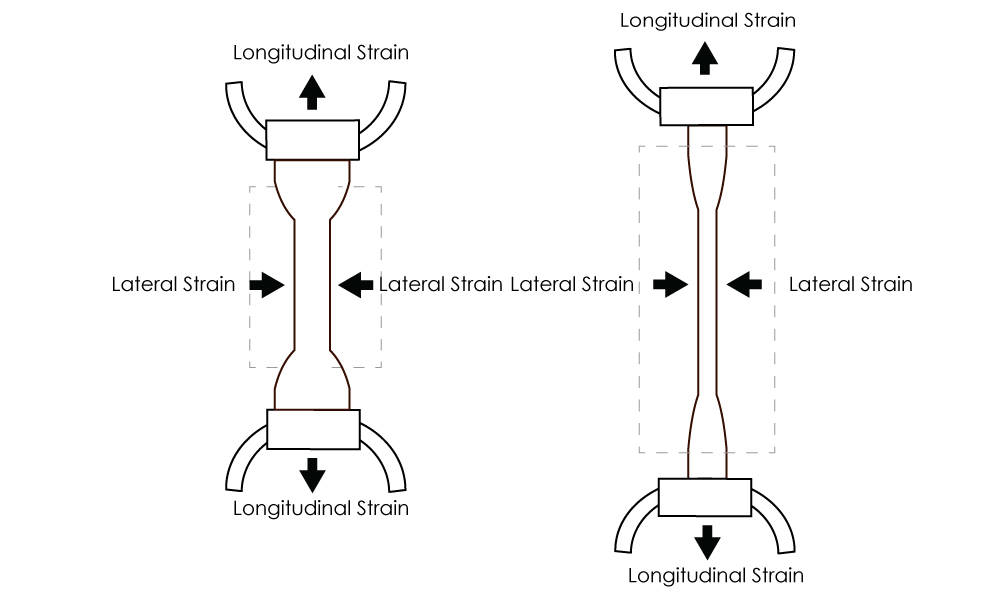Poisson's Ratio
Poisson's ratio is the ratio of expansion along one axis to contraction along the opposite axis when a material is subjected to tensile or compressive forces. Applying tensile strain to a rubber band, for example, causes it to elongate axially and contract in the transverse direction, becoming thinner as it simultaneously becomes longer. Applying compressive forces to a rubber ball will cause the material to expand laterally along its transverse axis as it contracts longitudinally. Poisson's ratio is simply an expression of this relationship between axial and transverse deformations.
The equation for calculating Poisson’s ratio is given as ν=(-ε_trans)/ε_axial. Transverse strain (ε_trans) is measured in the direction perpendicular to the applied force, and axial strain (ε_axial) is measured in the direction of the applied force. Within the elastic region of a given specimen, Poisson’s ratio is essentially constant, and is the negative of the ratio of transverse strain to the corresponding axial strain resulting from uniformly distributed axial stress below the proportional limit of the material.
For a tensile test, transverse strain is considered negative lateral deformation in a specimen, while axial strain is considered positive longitudinal deformation. These values are reversed for a compression test. Poisson's ratio is not expressed in units and is generally positive, because all common materials experience narrowing in their cross-sectional area during tensile testing. Most materials have a Poisson’s ratio between 0 and 0.5, with highly elastic materials like rubber commonly having a Poisson’s ratio around 0.5. Most metals, such as stainless steel, commonly have a Poisson’s ratio around 0.3. Cork, however, has a Poisson’s ratio of virtually 0, meaning that cork exhibits little to no lateral deformation when experiencing an axial load, and visa versa, making it the ideal candidate for sealing wine bottles.
When testing specimens to a standard, the standard will usually call out for a range of axial strain where Poisson’s ratio is to be calculated. This is so Poisson’s ratio is determined within the elastic region of the material. When testing in accordance ASTM D638 for example, Poisson’s ratio is to be calculated within 0.05 to 0.25% axial strain. Poisson’s ratio is primarily used by engineers to identify how much a material can be stretched or compressed before it fails. This is commonly used in the designing of new structures because it allows engineers to consider the expected dimensional changes of a given material when under load.


Brochura do Bluehill Universal
O Bluehill Universal é o software de teste de materiais avançado da Instron, projetado para interação tátil intuitiva e fluxos de trabalho simplificados. Ele oferece métodos de teste pré-carregados, QuickTest para configuração rápida, exportação de dados aprimorada e Instron Connect para comunicação direta com o serviço. Os usuários do Bluehill 2 e do Bluehill 3 podem atualizar facilmente para a versão mais recente para melhor desempenho e usabilidade

Série 3400 – Soluções de teste acessíveis
Sistemas de teste universal Instron série 3400 para testes de tração, compressão, curvatura e outros testes de propriedades de materiais.

6800 Series Premier Testing Systems Brochure
Instron 6800 Series Universal Testing Systems provide unparalleled accuracy and reliability. Built on a patent-pending Operator Protect system architecture with an all-new Smart-Close Air Kit and Collision Mitigation features, the 6800 Series makes materials testing simpler, smarter, and safer than ever before.